Carbon Fibers from UV-Assisted Stabilization of Lignin-Based Precursors
Abstract
:1. Introduction
2. Experimental Section
2.1. Carbon Fiber Preparation
2.2. Characterization
3. Results and Discussion
3.1. FTIR
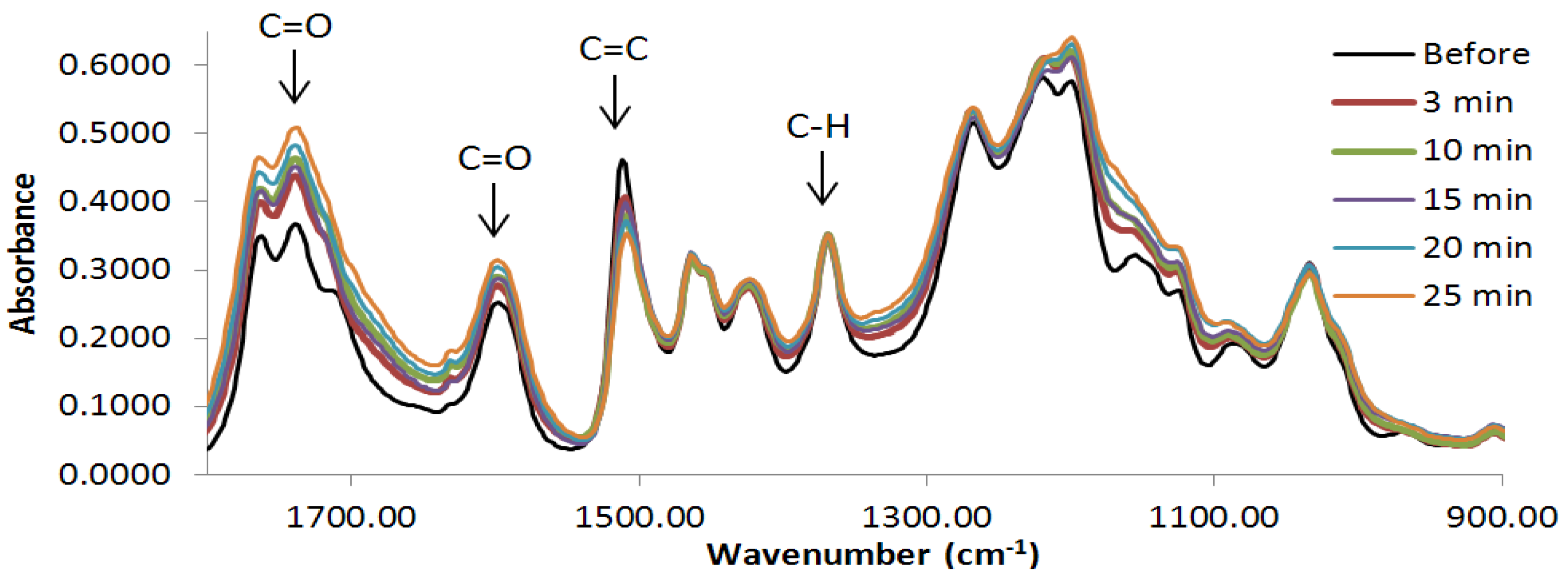
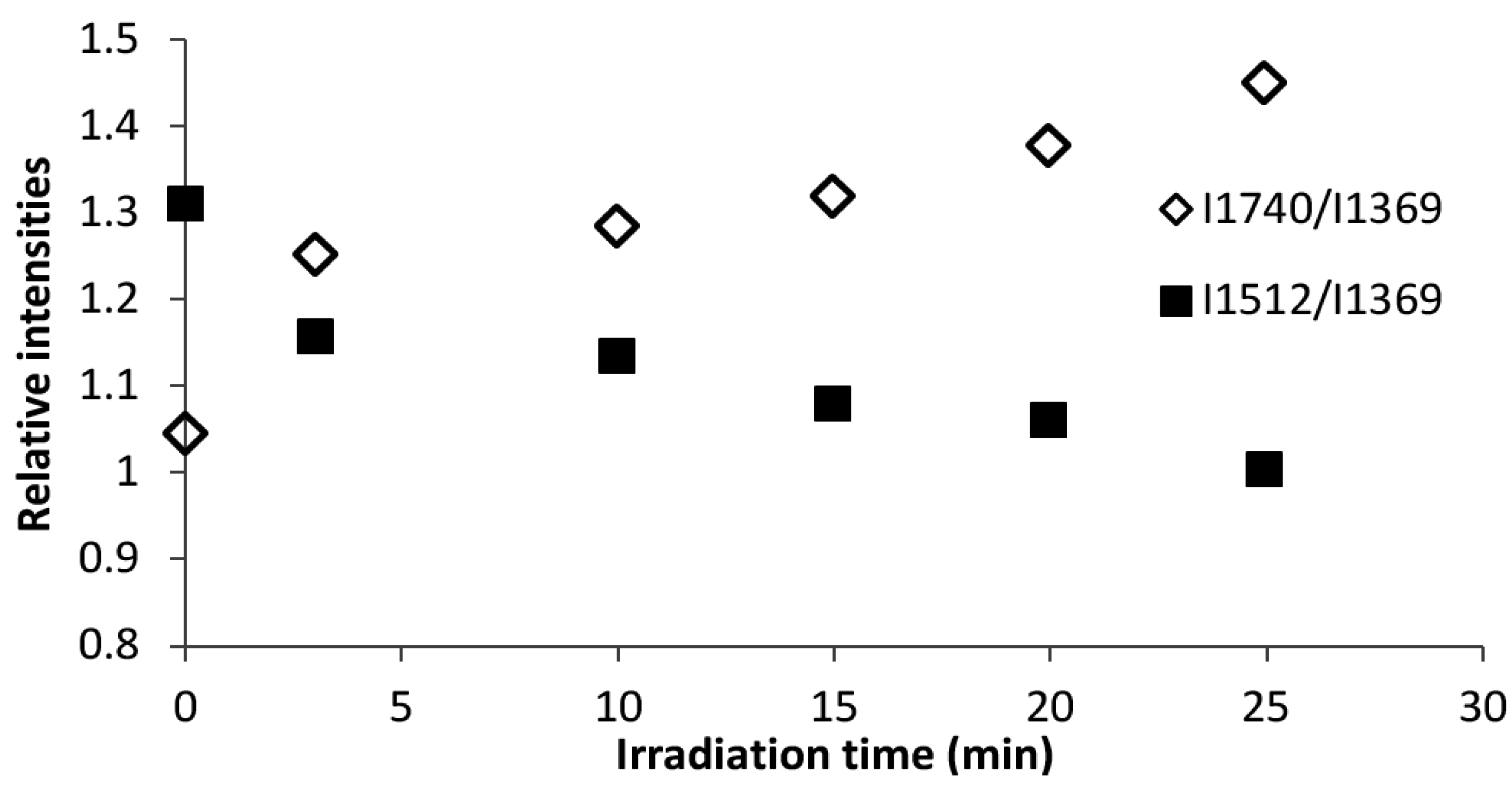
3.2. DSC
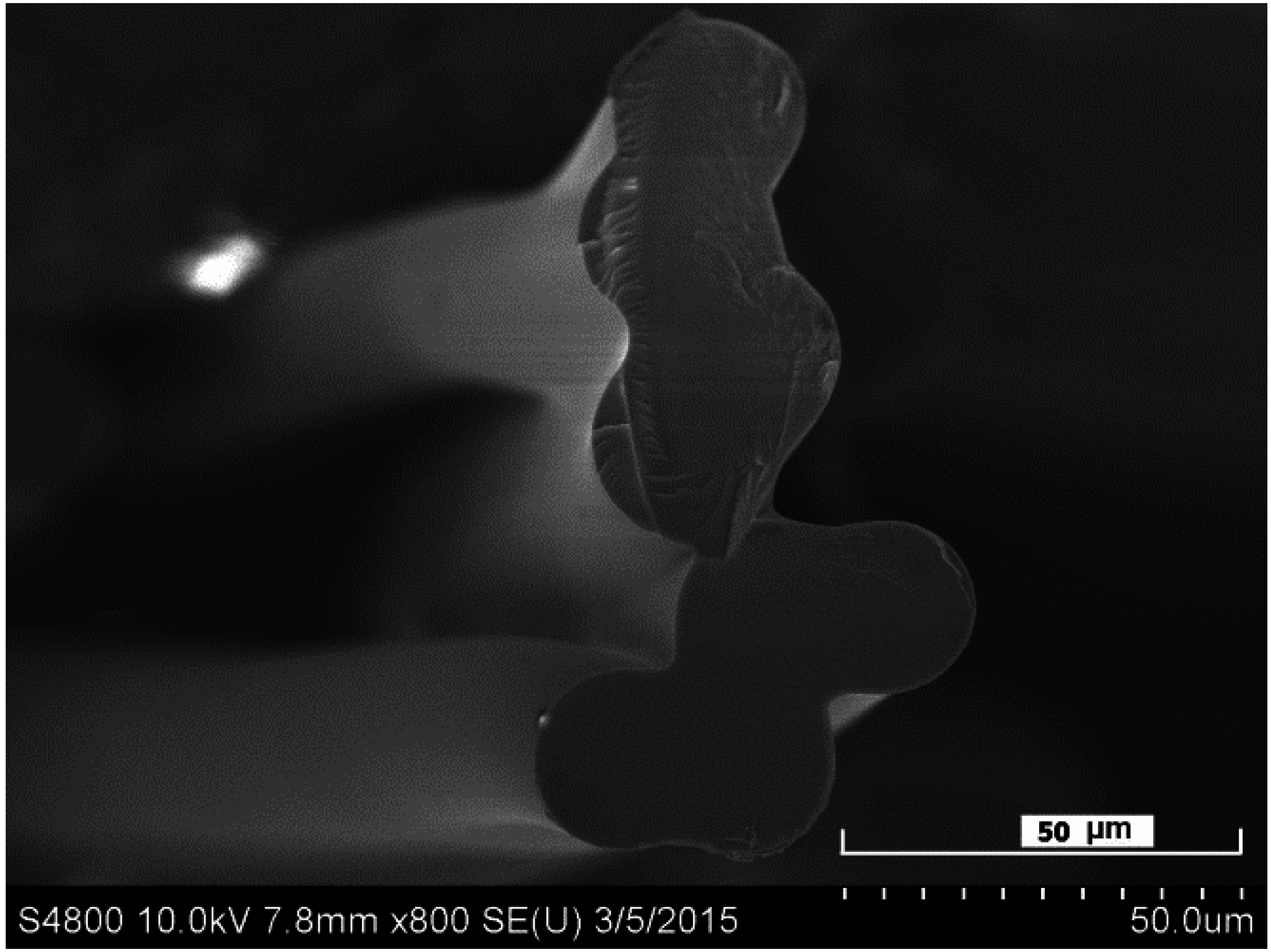
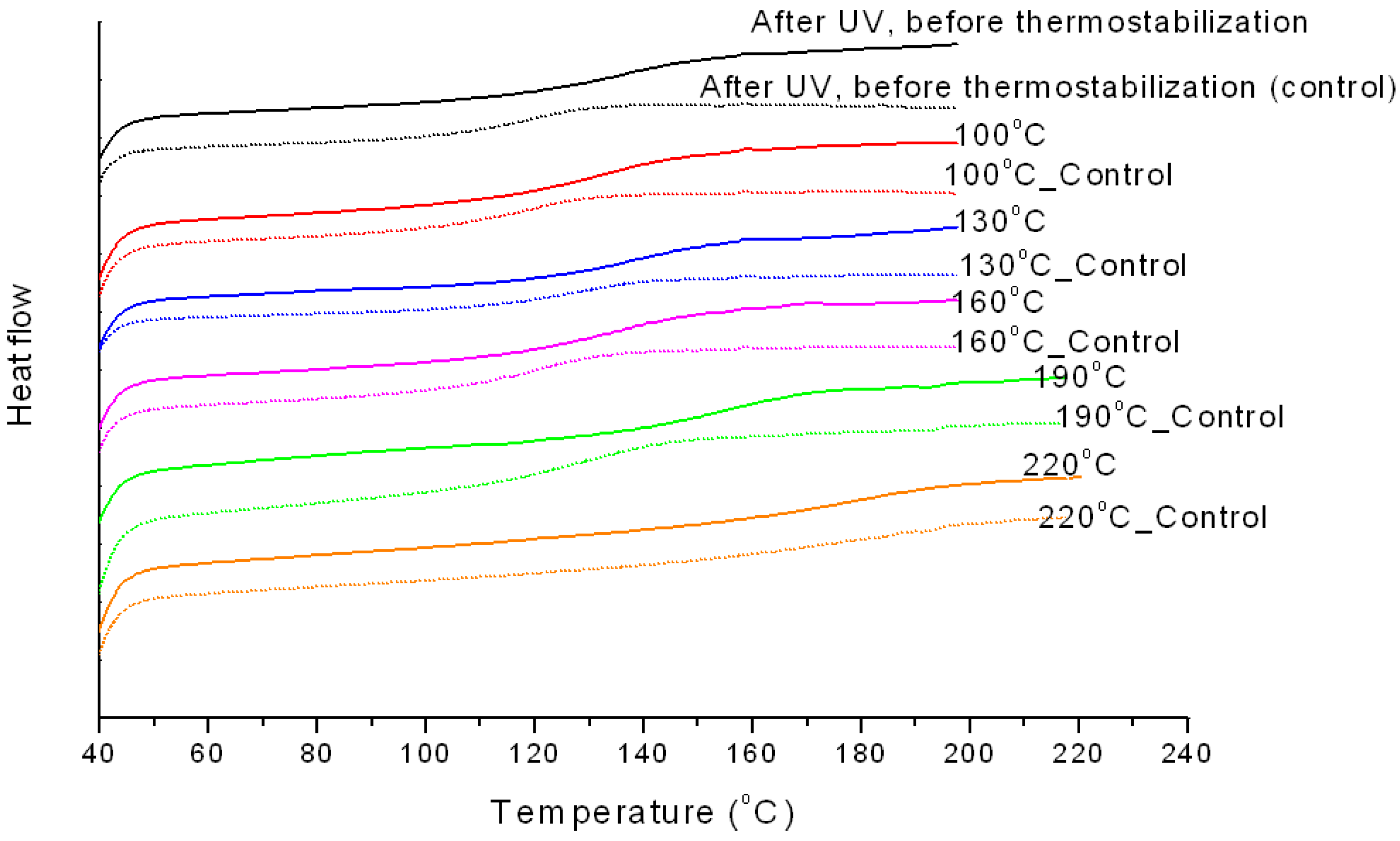
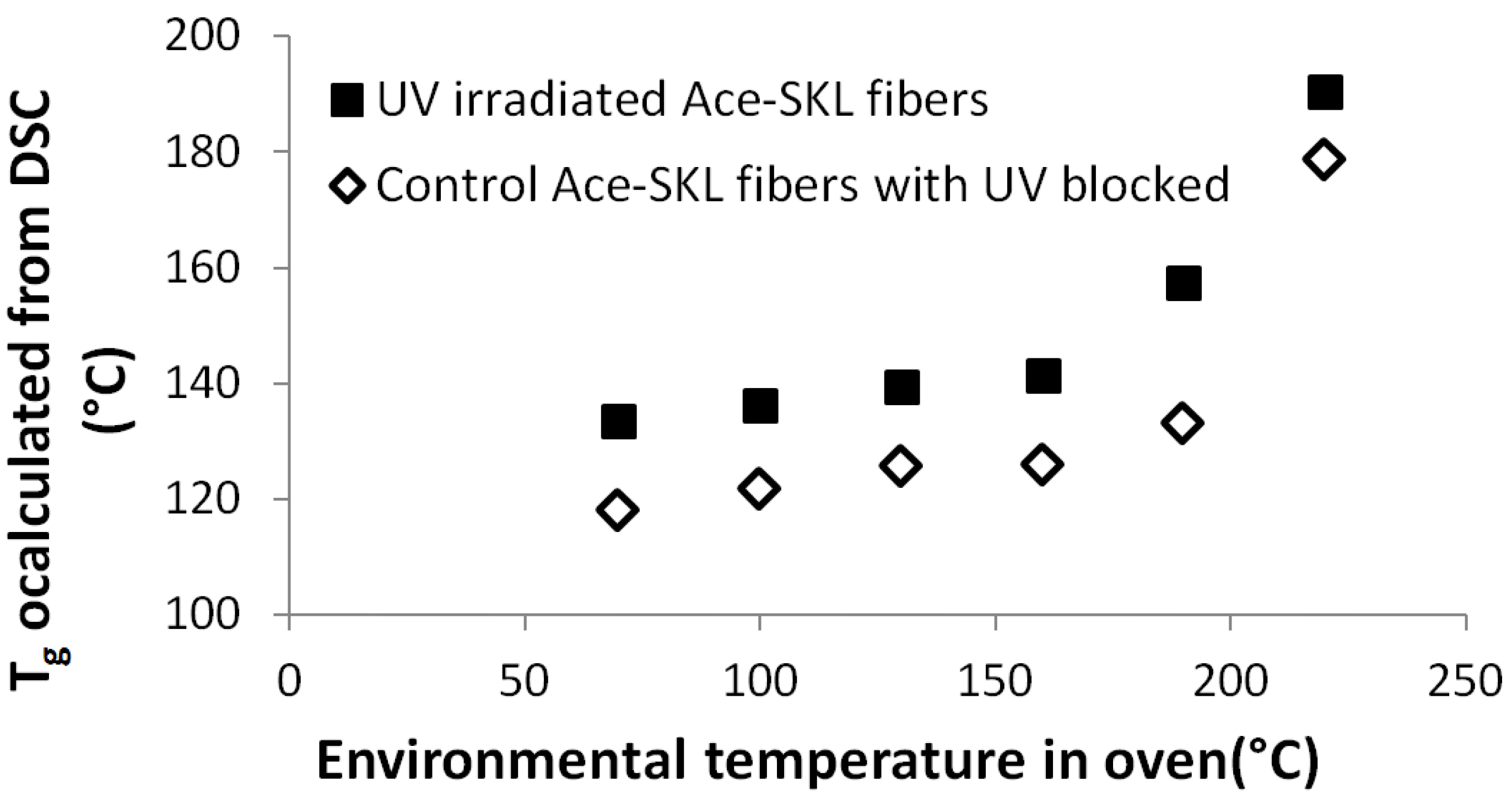
3.3. GPC

3.4. UV/Thermal Dual Stabilization
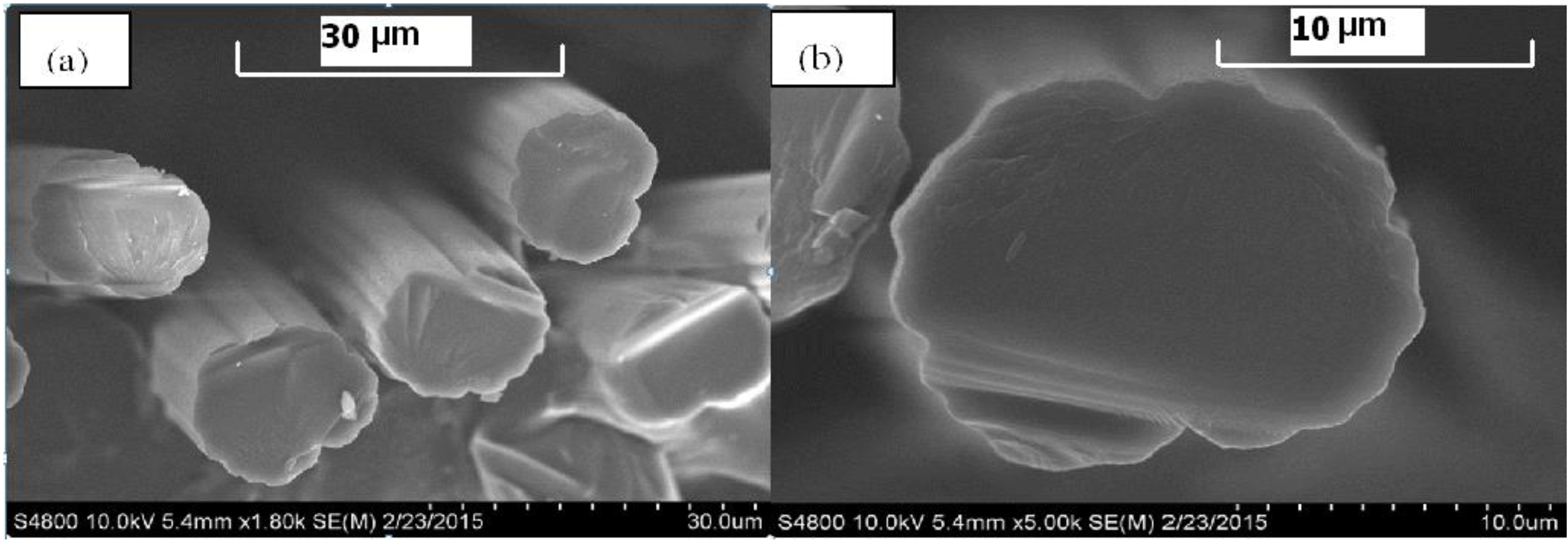
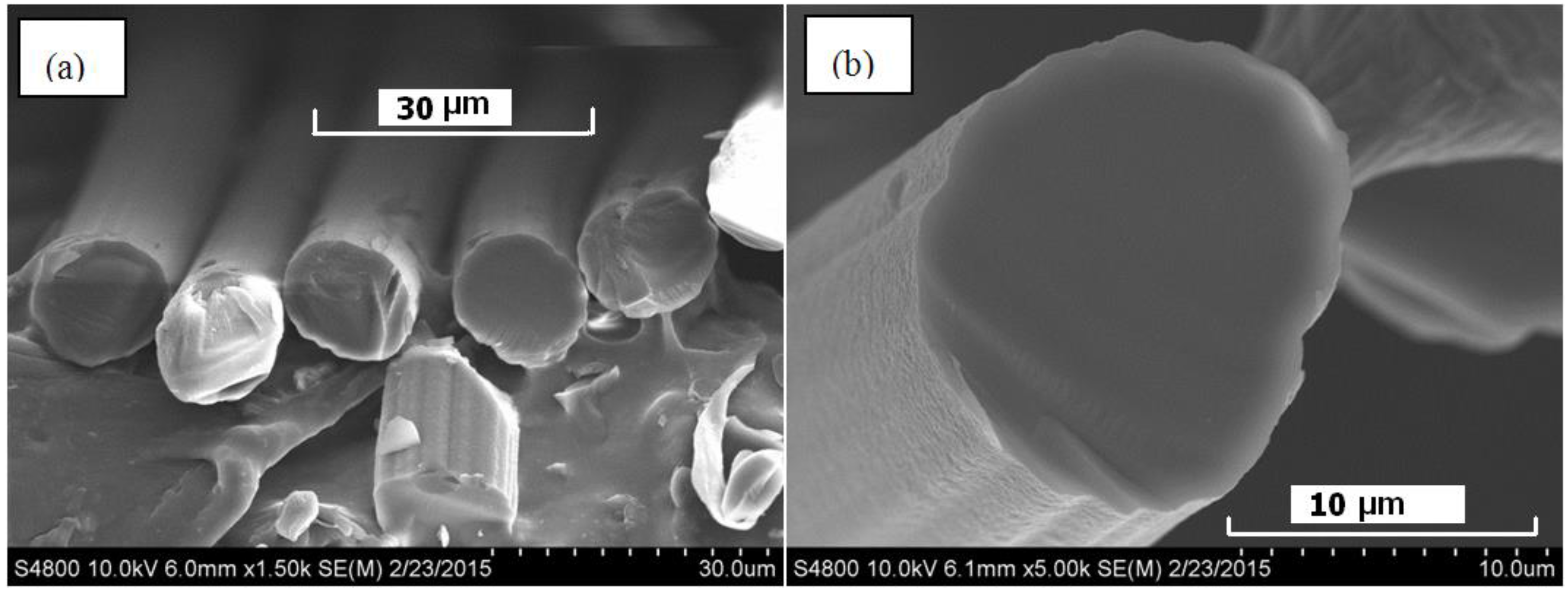
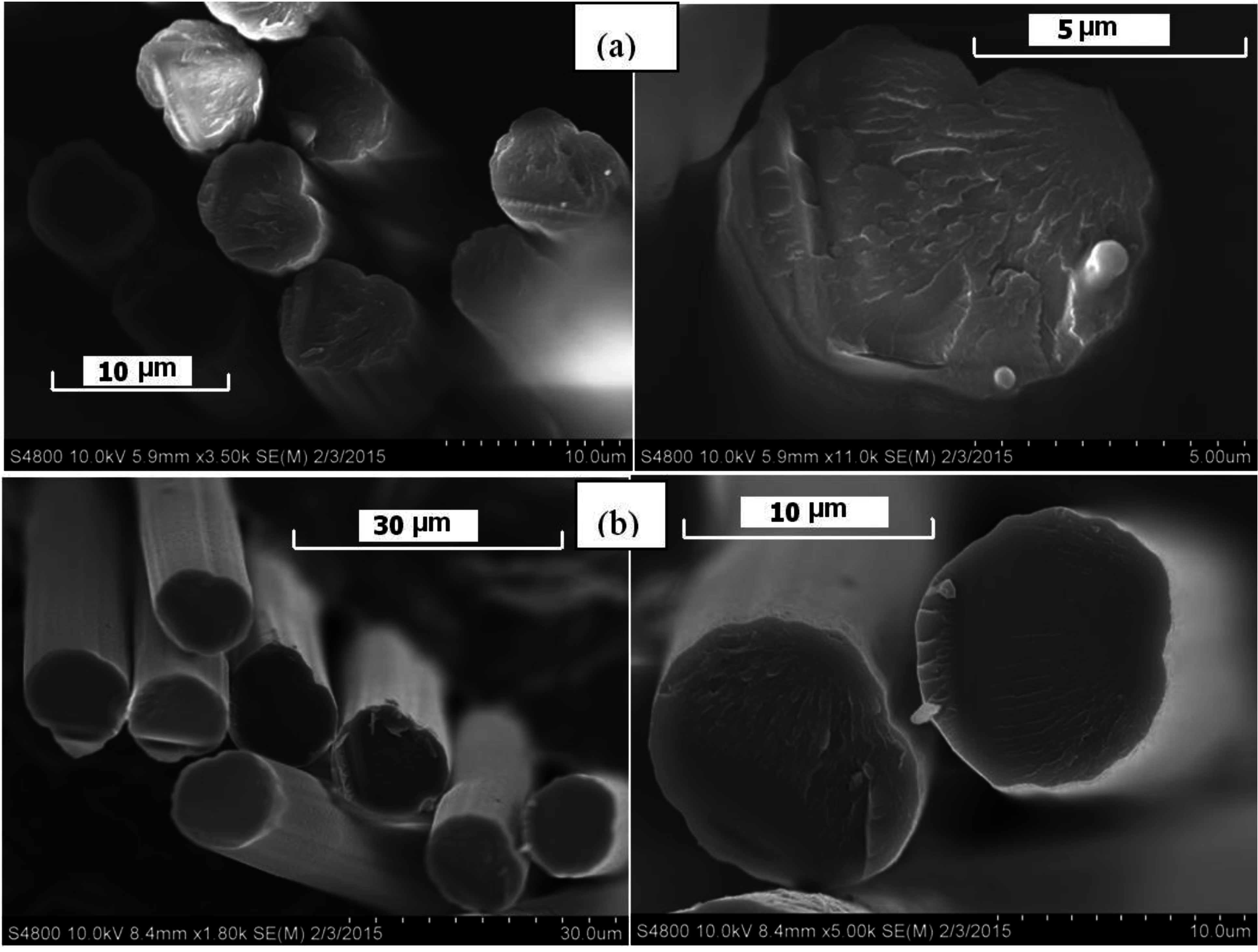
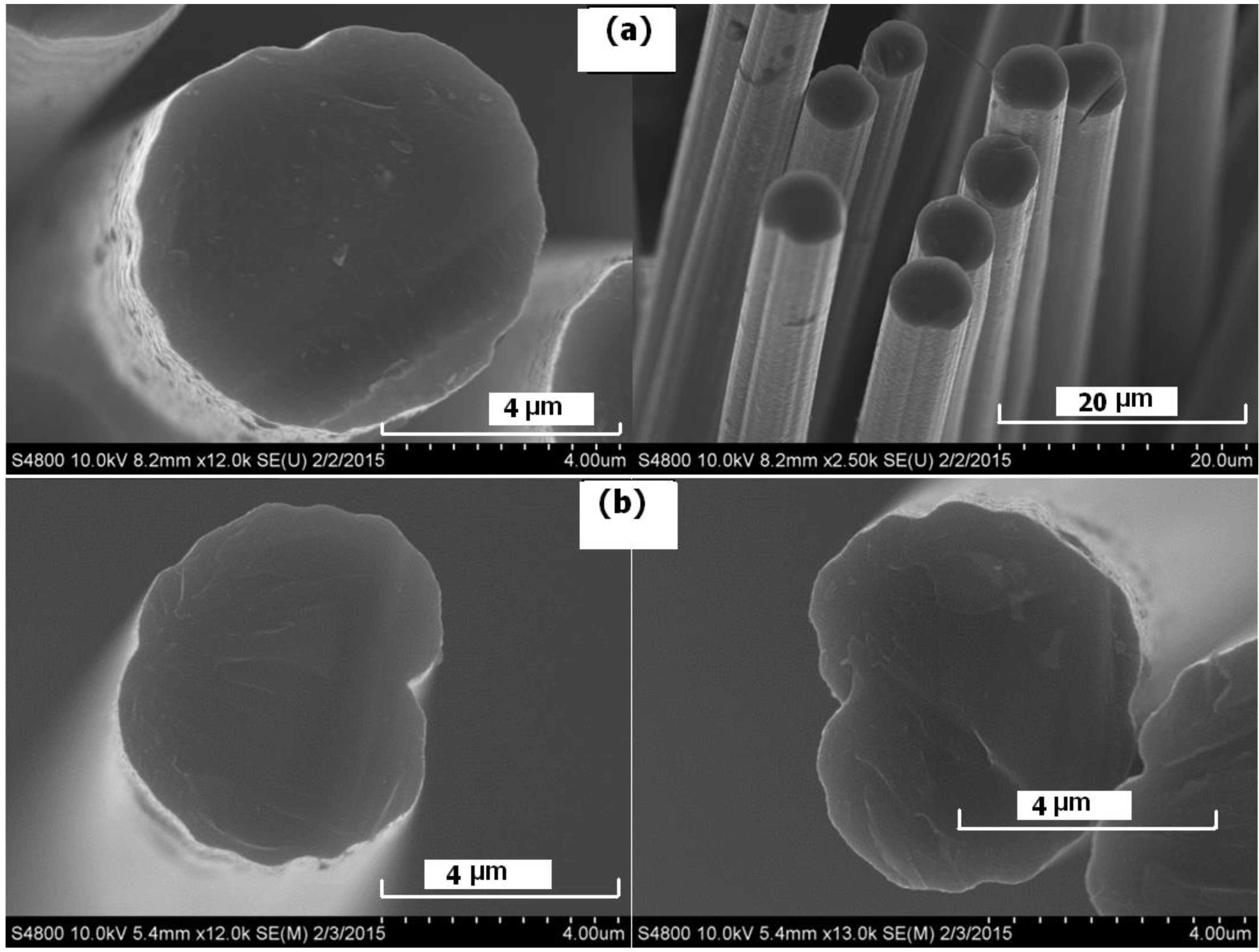
4. Conclusions
Acknowledgments
Author Contributions
Conflicts of Interest
References
- Edie, D.D.; Diefendorf, R.J. Carbon-Carbon Materials and Composites; Noyes Publications: Park Ridge, NJ, USA, 1993; pp. 20–33. [Google Scholar]
- Fitzer, E.; Manocha, L.M. Carbon Reinforcements and Carbon/Carbon Composites; Springer: Berlin, Germany, 1998; pp. 17–28. [Google Scholar]
- Peebles, L.H. Carbon Fibers, Formation, Structure and Properties; CRC Press: Boca Raton, FL, USA, 1995; pp. 7–24. [Google Scholar]
- Braun, J.; Holtman, K.; Kadla, J. Lignin-based carbon fibers: Oxidative thermostabilization of kraft lignin. Carbon 2005, 43, 385–394. [Google Scholar] [CrossRef]
- Kadla, J.; Kubo, S.; Venditti, R.; Gilbert, R.; Compere, A.; Griffith, W. Lignin-based carbon fibers for composite fiber applications. Carbon 2002, 40, 2913–2920. [Google Scholar] [CrossRef]
- Sudo, K.; Shimizu, K. A new carbon fiber from lignin. J. Appl. Polym. Sci. 1992, 44, 127–134. [Google Scholar] [CrossRef]
- Uraki, Y.; Kubo, S.; Nigo, N.; Sano, Y.; Sasaya, T. Preparation of carbon fibers from organosolv lignin obtained by aqueous acetic acid pulping. Holzforschung 1995, 49, 343–350. [Google Scholar] [CrossRef]
- Eckert, R.C.; Abdullah, Z. Carbon Fibers from Kraft Softwood Lignin. U.S. Patent 7678358, 16 March 2010. [Google Scholar]
- Baker, D.A.; Gallego, N.C.; Baker, F.S. On the characterization and spinning of an organic-purified lignin toward the manufacture of low-cost carbon fiber. J. Appl. Polym. Sci. 2012, 124, 227–234. [Google Scholar] [CrossRef]
- Warren, C.D.; Naskar, A.K. Lower cost carbon fiber precursors. In Presentation at 2012 DOE Hydrogen and Fuel Cells Program and Vehicle Technologies Program Annual Merit Review and Peer Evaluation Meeting; Arlington, VA, USA, 16 May 2012. Available online: http://www1.eere.energy.gov/vehiclesandfuels/pdfs/merit_review_2012/lightweight_materials/lm004_warren_2012_o.pdf (accessed on 1 May 2015).
- Baker, D.A.; Rials, T.G. Recent advances in low-cost carbon fiber manufacture from lignin. J. Appl. Polym. Sci. 2013, 130, 713–728. [Google Scholar] [CrossRef]
- Zhang, M.; Ogale, A.A. Carbon fibers from dry-spinning of acetylated softwood kraft lignin. Carbon 2014, 69, 626–629. [Google Scholar] [CrossRef]
- Norberg, I.; Nordström, Y.; Drougge, R.; Gellerstedt, G.; Sjöholm, E. A new method for stabilizing softwood kraft lignin fibers for carbon fiber production. J. Appl. Polym. Sci. 2012, 128, 3824–3830. [Google Scholar] [CrossRef]
- Paiva, M.; Kotasthane, P.; Edie, D.; Ogale, A.A. UV stabilization route for melt-processible PAN-based carbon fibers. Carbon 2003, 41, 1399–1409. [Google Scholar] [CrossRef]
- Naskar, A.K.; Walker, R.A.; Proulx, S.; Edie, D.D.; Ogale, A.A. UV assisted stabilization routes for carbon fiber precursors produced from melt-processible polyacrylonitrile terpolymer. Carbon 2005, 43, 1065–1072. [Google Scholar] [CrossRef]
- Morales, M.S.; Ogale, A.A. UV-induced crosslinking and cyclization of solution-cast polyacrylonitrile copolymer. J. Appl. Polym. Sci. 2013, 128, 2081–2088. [Google Scholar] [CrossRef]
- Morales, M.S.; Ogale, A.A. Carbon fibers derived from UV-assisted stabilization of wet-spun polyacrylonitrile fibers. J. Appl. Polym. Sci. 2014, 131. [Google Scholar] [CrossRef]
- Plackett, D.; Dunningham, E.; Singh, A. Weathering of chemically modified wood. Holz als Roh Werkstoff. 1992, 50, 135–140. [Google Scholar] [CrossRef]
- Heitner, C. Light-induced yellowing of wood-containing papers: An evolution of the mechanism. In Photochemistry of Lignocellulosic Materials; Heitner, C., Scaiano, J.C., Eds.; American Chemical Society: Washington, DC, USA, 1993; Volume 531, pp. 2–25. [Google Scholar]
- Feist, W.C.; Rowell, R.M.; Ellis, W.D. Moisture sorption and accelerated weathering of acetylated and methacrylated aspen. Wood Fiber Sci. 1991, 23, 128–136. [Google Scholar]
- Chang, H.; Su, Y.; Chang, S. Studies on photostability of butyrylated, milled wood lignin using spectroscopic analyses. Polym. Degrad. Stab. 2006, 91, 816–822. [Google Scholar] [CrossRef]
- Zhang, M.; Ogale, A.A. Carbon Fibers Derived from Acetylated Softwood Kraft Lignin. In Polymer Precursor-Derived Carbon; ACS Symposium Series; Naskar, A.K., Hoffman, W.P, Eds.; American Chemical Society: Washington, DC, USA, 2014; Volume 1173, pp. 137–152. [Google Scholar]
- Standard Test Method for Tensile Strength and Young’s Modulus for High-Modulus Single-Filament Materials (Withdrawn 1998). ASTM D3379-75(1989)e1; ASTM International: West Conshohocken, PA, USA, 1975.
- Faix, O. Classification of lignins from different botanical origins by FT-IR spectroscopy. Holzforschung 1991, 45, 21–28. [Google Scholar] [CrossRef]
- Paulsson, M.; Simonson, R. Acetylation of lignin and photostabilization of lignin-rich mechanical wood pulp and paper. In Chemical Modification, Properties, and Usage of Lignin; Hu, T.Q., Ed.; Springer: New York, NY, USA, 2002; pp. 221–245. [Google Scholar]
- Koch, H.; Hübner, K.; Fischer, K. The influence of light on the molecular mass of lignin. J. Wood Chem. Technol. 1994, 14, 339–349. [Google Scholar] [CrossRef]
- Fischer, K.; Beyer, M. Comparison of light-induced and heat-induced yellowing of pulp. Lenzing. Ber. 2000, 79, 25–31. [Google Scholar]
© 2015 by the authors; licensee MDPI, Basel, Switzerland. This article is an open access article distributed under the terms and conditions of the Creative Commons Attribution license (http://creativecommons.org/licenses/by/4.0/).
Share and Cite
Zhang, M.; Jin, J.; Ogale, A.A. Carbon Fibers from UV-Assisted Stabilization of Lignin-Based Precursors. Fibers 2015, 3, 184-196. https://doi.org/10.3390/fib3020184
Zhang M, Jin J, Ogale AA. Carbon Fibers from UV-Assisted Stabilization of Lignin-Based Precursors. Fibers. 2015; 3(2):184-196. https://doi.org/10.3390/fib3020184
Chicago/Turabian StyleZhang, Meng, Jing Jin, and Amod A. Ogale. 2015. "Carbon Fibers from UV-Assisted Stabilization of Lignin-Based Precursors" Fibers 3, no. 2: 184-196. https://doi.org/10.3390/fib3020184
APA StyleZhang, M., Jin, J., & Ogale, A. A. (2015). Carbon Fibers from UV-Assisted Stabilization of Lignin-Based Precursors. Fibers, 3(2), 184-196. https://doi.org/10.3390/fib3020184





